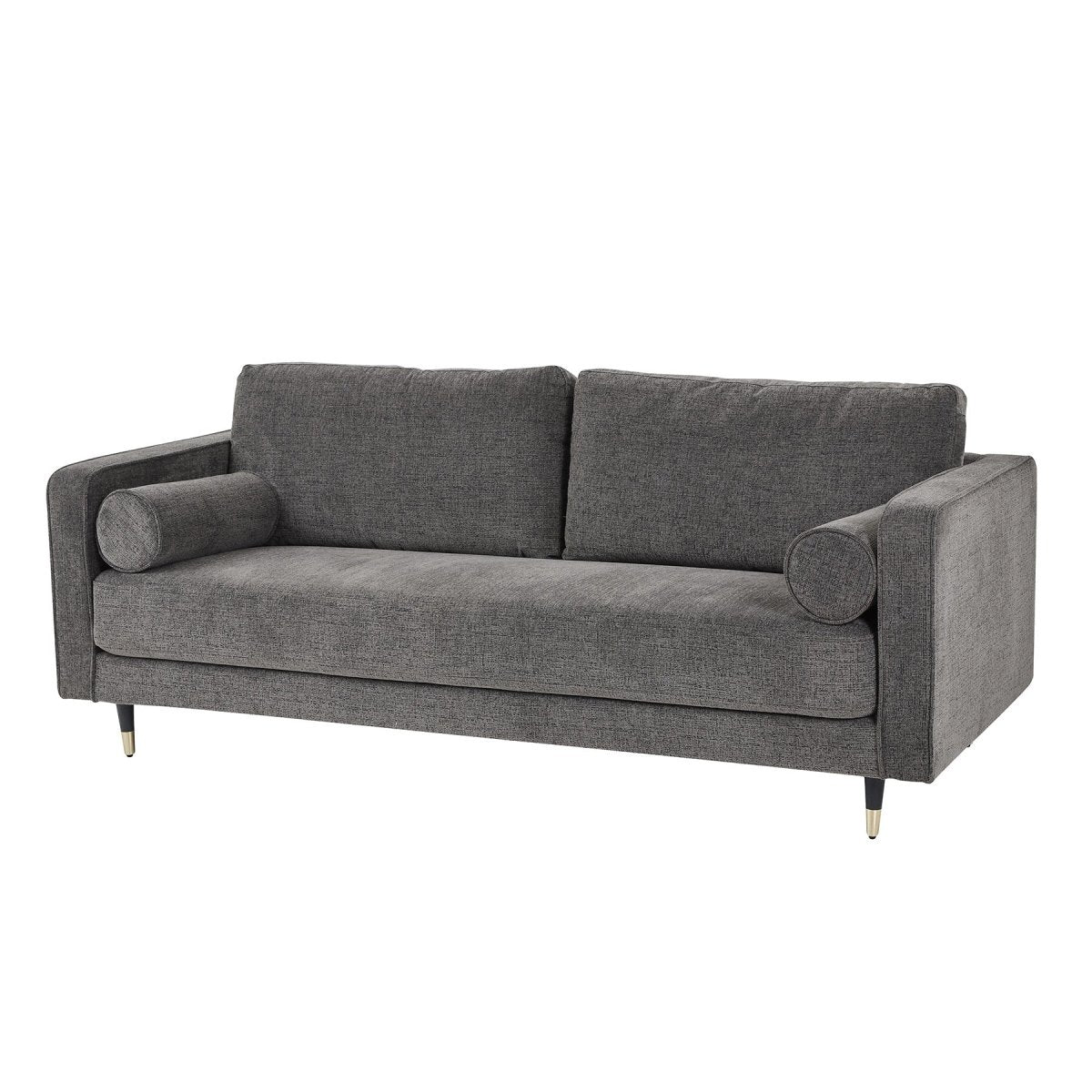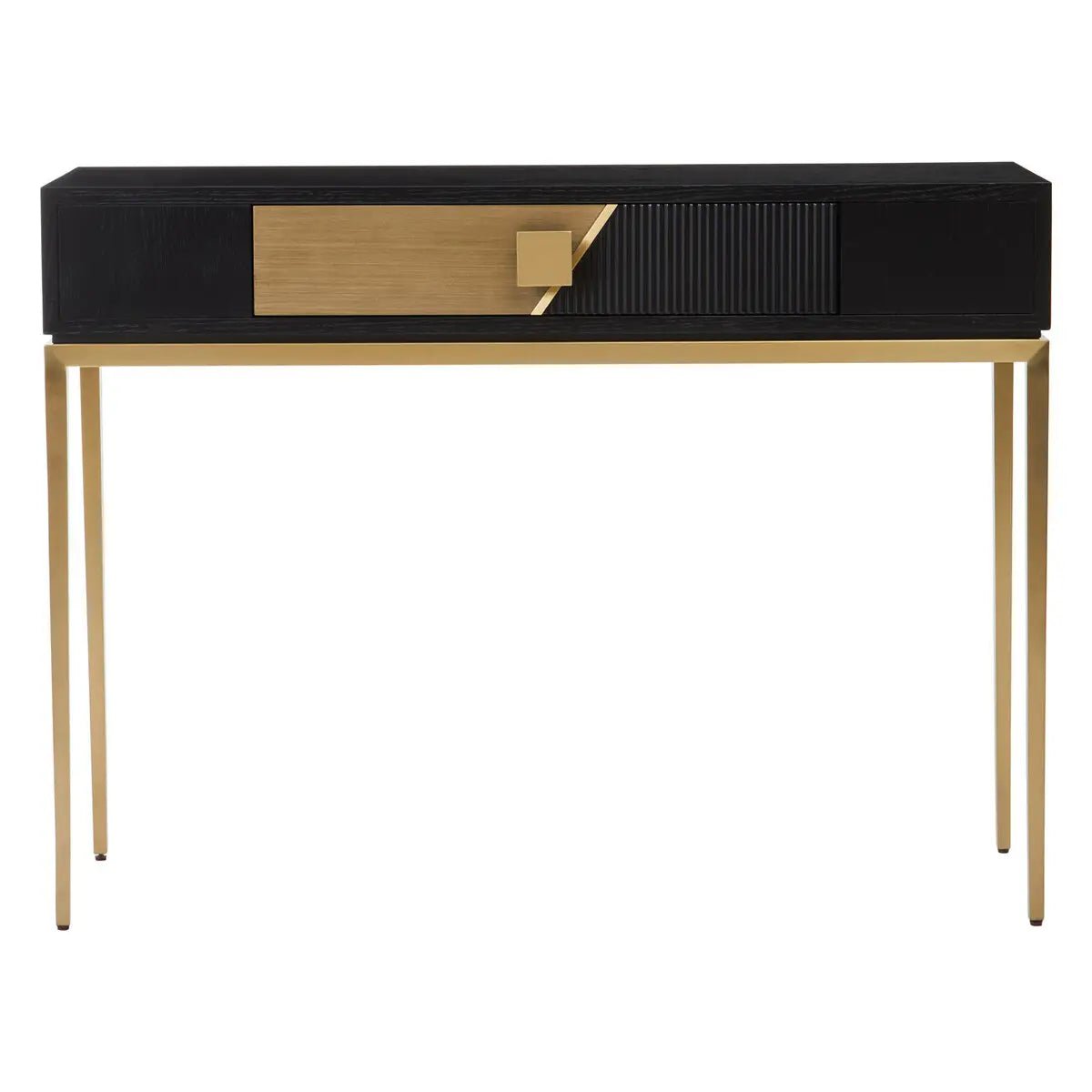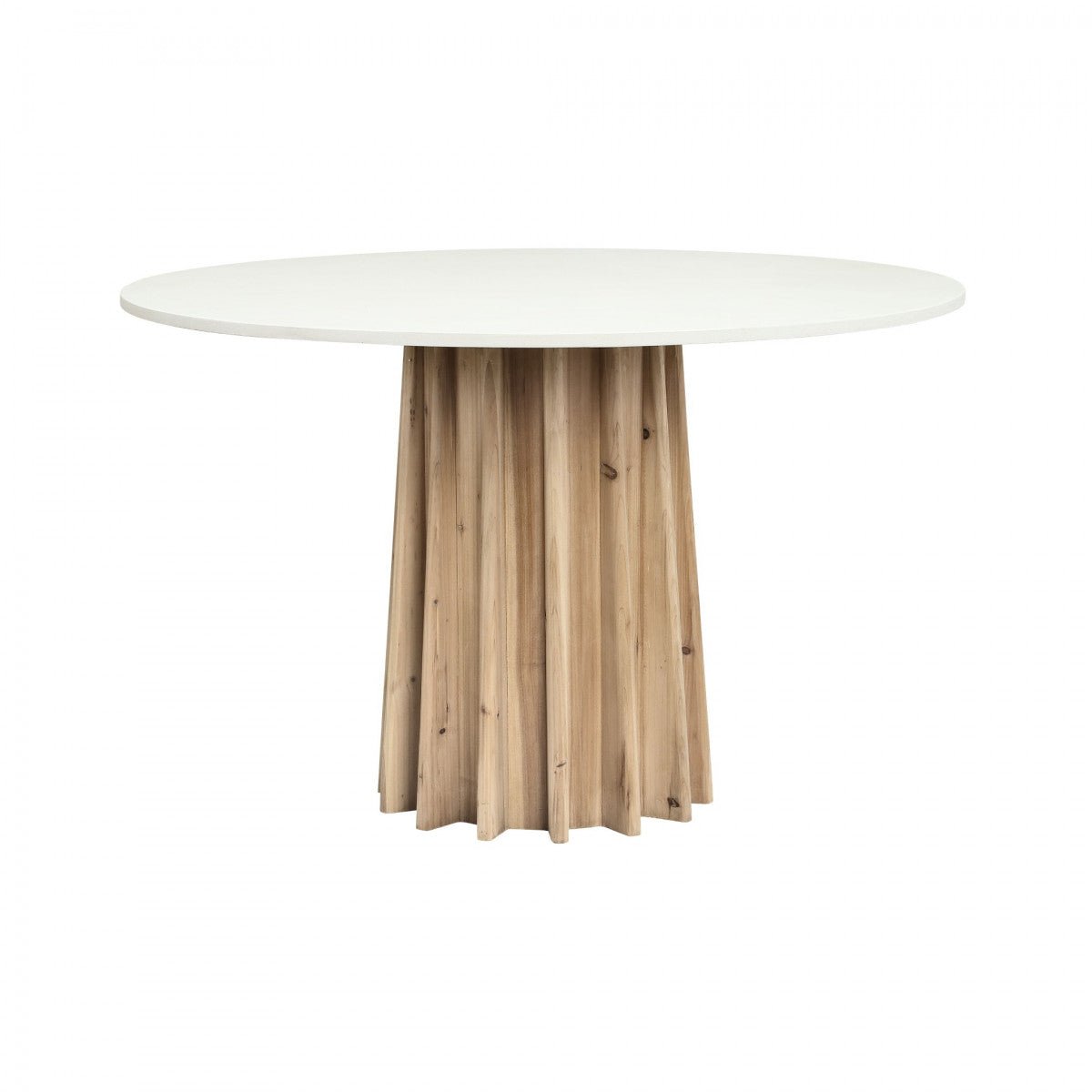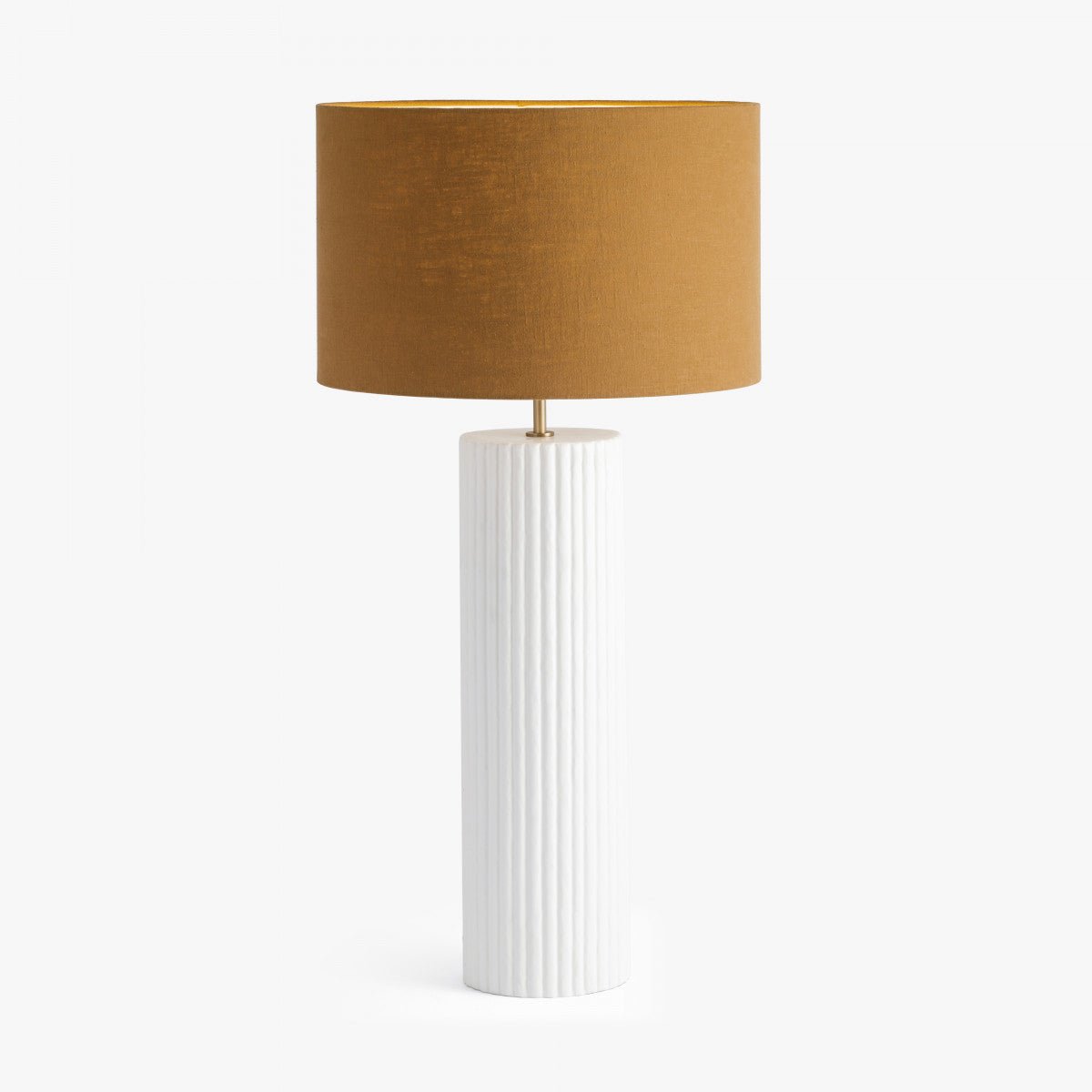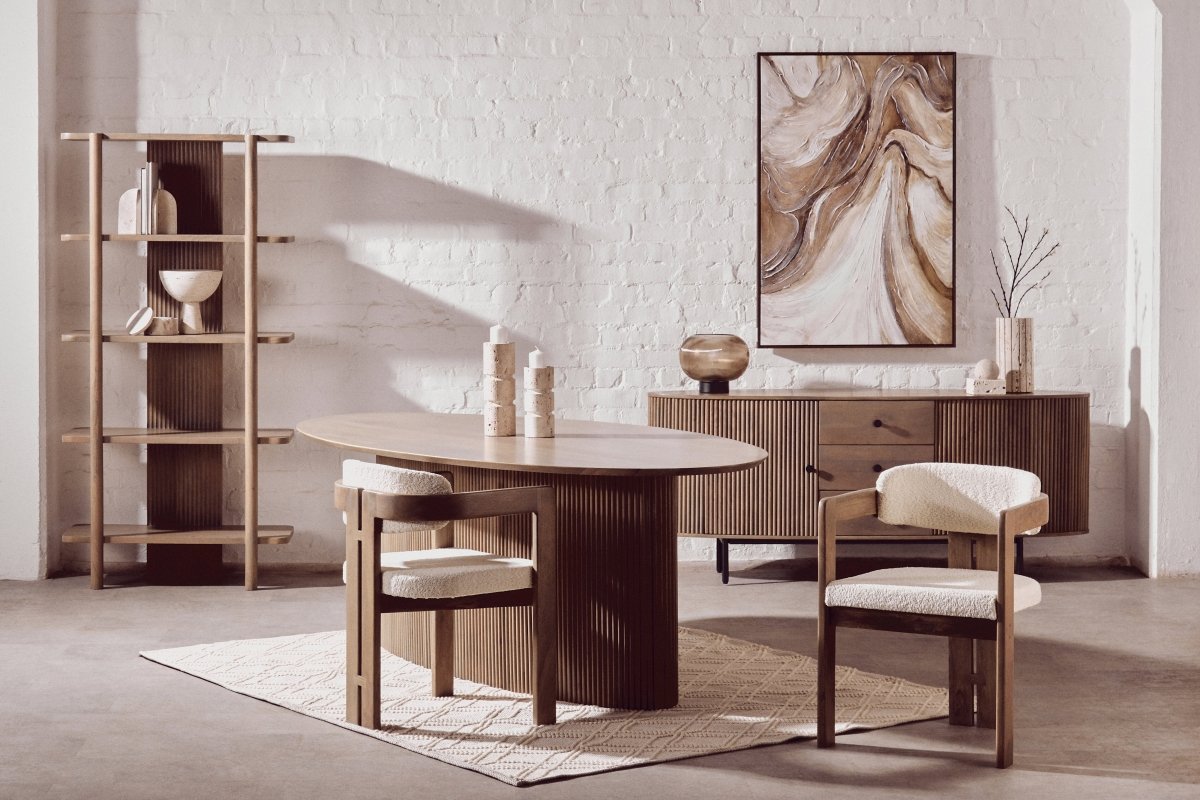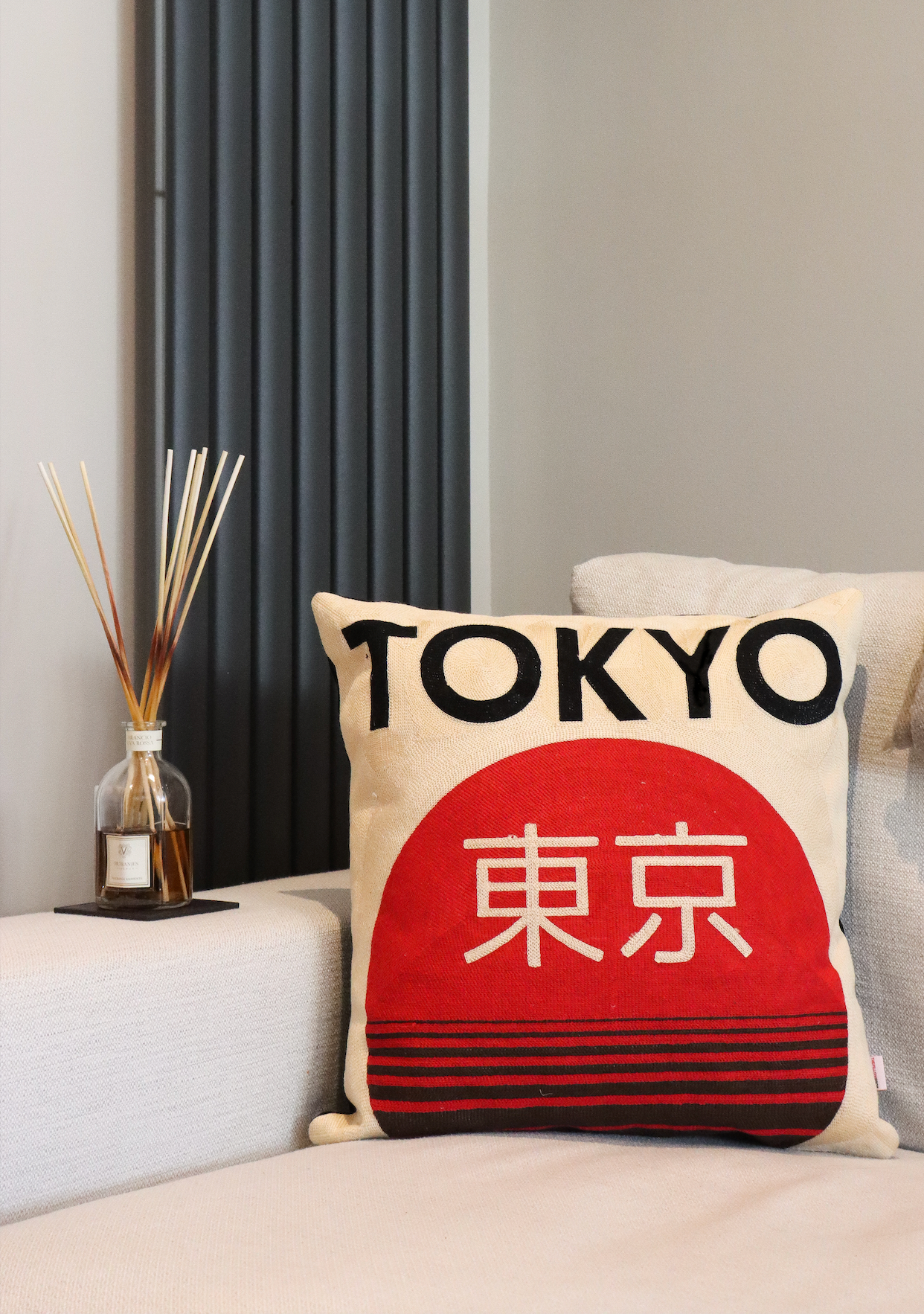Solid Wood Furniture Guide: Types of Wood, Trends & Tips for UK Homes (2025)
Solid wood furniture brings natural beauty and durability into your home. In the UK, homeowners increasingly appreciate the quality and character of solid wood furniture – from elegant oak dining tables to sustainable mango wood coffee tables. This comprehensive guide will explore the types of wood used in furniture, how to identify true solid wood pieces, the latest design trends for 2025, and tips for choosing the perfect pieces for every room.
We’ll also answer frequently asked questions about buying and caring for solid wood furniture. Whether you’re furnishing a London flat or a country cottage, this guide will help you make informed choices for a stylish, long-lasting home interior.
What Is Solid Wood Furniture (vs. Veneer)?
Solid wood furniture is made entirely from natural wood, unlike veneer furniture which uses a thin layer of wood glued over a core of cheaper material (like MDF or particleboard). For example, an oak coffee table labeled “solid oak” means all visible parts are oak lumber, not just a surface layer. Solid wood pieces tend to be heavier, sturdier, and can be refinished or repaired more easily than veneered pieces.
By contrast, veneer furniture has only a surface of real wood – the grain you see is a thin slice attached to a composite core. Veneers can allow creative use of exotic wood grains and help prevent warping, but once damaged they’re hard to fix and generally less durable than solid wood.
Why Choose Solid Wood Furniture?
Many UK homeowners are moving away from “fast furniture” and investing in solid wood dressers, tables, and sofas with wooden frames as long-term pieces. Here are key benefits of solid wood furniture:
-
Durability & Strength: Solid hardwoods like oak, teak, or mango wood are incredibly durable – resistant to daily wear and able to support heavy use without bending or breaking. For example, mango wood furniture is known for high durability (comparable to ash or oak) and can withstand daily use without cracking. Unlike flat-pack particleboard furniture, a well-constructed solid wood table or chair won’t wobble or loosen easily over time. This makes solid wood ideal for frequently used items like dining tables, bed frames, or wooden garden furniture benches.
-
Longevity: Solid wood furniture can truly stand the test of time. With basic care, pieces can last decades or even become heirlooms. Surface scratches can be polished out and finishes renewed. The natural patina that wood develops often enhances its beauty. It’s not unusual to find antique oak cabinets or mahogany tables that are 100+ years old – a testament to solid wood’s longevity.
-
Aesthetic Beauty: Every piece of wood has unique grain patterns and color tones, giving solid wood furniture one-of-a-kind character. The warmth of natural wood – whether the golden glow of teak or the rustic texture of reclaimed wood – instantly adds charm to any room. Solid wood can be carved or shaped into beautiful designs, or left with a simple, clean-lined design to let the material speak for itself. Furniture made from real wood tends to look richer and more “authentic” than vinyl veneers. Plus, solid wood can be finished in various stains or paints, or even kept in its natural colour. (We’ll discuss wood colour trends later, like how oak furniture can be lightened or darkened).
-
Refinishing & Repairs: One huge advantage of solid wood is that you can refinish it. If your solid pine kitchen table gets stained and battered over years of family dinners, you can sand it down and re-varnish or paint it to give it new life. With solid wood, you also have the option to modify pieces (shorten table legs, drill holes for cables in a TV unit, etc.) without worrying about exposing a fake core. Small damages like dings or water rings can often be buffed out or re-oiled on solid wood surfaces. This makes solid wood furniture a sustainable choice – you won’t need to replace it as often, reducing waste.
-
Sustainability: Speaking of sustainability, solid wood can be an eco-friendly option, especially if sourced responsibly. Reclaimed wood furniture reuses timber from old buildings or barns, reducing demand for new lumber and giving existing wood a second life. Many retailers, including Opulent, prioritize wood from sustainable forests (look for FSC certification) or use fast-growing wood species. We’ll cover specific sustainable woods (like mango and reclaimed teak) in the next section. Solid wood is also biodegradable at end of life (unlike plastic-based furniture) and generally has a lower chemical footprint if finished with natural oils or lacquers.
Finally, solid wood furniture simply feels high-quality. The solidity when you knock on a wooden tabletop, the smoothly sanded edges, and the natural scent of wood all contribute to a sense of luxury and comfort in your home. It’s no surprise that luxury home furniture collections heavily feature solid woods – the material itself is a sign of craftsmanship and lasting value.
Solid Wood Types
Not all wood furniture is the same. Different wood species have distinct looks and properties, which influence how they’re used in furniture making. Here we’ll explore popular wood furniture types – from traditional oak to exotic mango wood – and their ideal uses in your home.
To summarise the wood types, here is a quick comparison table of key furniture woods and their traits:
|
Wood Type |
Color & Grain |
Strength & Durability |
Best Uses |
Notable Benefits |
|
Oak Wood |
Golden to medium brown; pronounced open grain with knots |
Very high durability (hard, heavy) |
Dining tables, cabinets, bedroom sets, living room pieces |
Long-lasting, timeless appeal; versatile finishes (light Scandi or dark stains). |
|
Mango Wood |
Medium brown with unique streaks; dense grain |
High durability (hardwood, slightly lighter than oak) |
Coffee tables, sideboards, cabinets, accent pieces |
Sustainable (fast-growing, byproduct of fruit farming); affordable for a hardwood; distinctive look. |
|
Teak Wood |
Honey brown (new) aging to grey; straight tight grain |
Extremely high (weatherproof oils, very hard) |
Outdoor furniture, garden benches, also indoor mid-century pieces |
Unmatched weather resistance (ideal for garden) and longevity; low maintenance outdoors. |
|
Acacia Wood |
Brown with natural variance; fine smooth grain |
Very high (hard and dense) |
Dining tables, consoles, chairs, bed frames |
Beautiful grain and sheen; water-resistant; often used in contemporary designs with metal accents. |
|
Pine Wood |
Pale cream/yellow with dark knots; straight grain |
Moderate (softwood, can dent) |
Bedroom furniture, bookshelves, farmhouse tables, kids furniture |
Budget-friendly; easy to paint or stain; lightweight, casual charm. |
|
Reclaimed Wood (various species) |
Weathered tones (grey/brown) with nail holes, patina; rough texture common |
Varies (usually hardwoods like oak or teak, well-seasoned) |
Coffee/dining tables, industrial-style pieces, decor accents |
Eco-friendly (recycled); each piece is unique with history; adds rustic character. |
|
Beech Wood |
Light beige with subtle grain (often uniform) |
High (hard, good bending strength) |
Dining chairs, stool legs, Scandinavian-style furniture |
Smooth finish, ideal for modern minimalist designs; often used in bentwood forms. |
|
Walnut Wood |
Rich dark brown, swirling grain patterns |
High (hard and dense) |
High-end cabinets, tables, feature pieces |
Luxurious furniture appearance; ages beautifully; strong yet works well for detailed craftsmanship. |
Solid Wood Furniture for Every Room
Solid Wood Furniture for the Living Room
Your living room is where comfort meets design, and solid wood furniture sets the foundation for both. Whether you prefer the warm hues of oak wood furniture, the character of reclaimed wood, or the rich textures of mango wood furniture, solid timber instantly adds depth and authenticity. Unlike veneers or MDF, solid wood pieces age gracefully, developing patina over time.
Coffee Tables. For a cohesive setup, start with a solid wood coffee table as your focal point. The Old Empire Rectangle Coffee Table and Old Empire Round Lattice Frame Mango Coffee Table are standout choices featuring mango wood with black accents and a reclaimed-style finish perfect for UK homes that blend modern and industrial charm. Pair them with the Vintage Coffee Table With Shelf for extra storage and layering potential.
If your living space leans toward luxury home furniture, oak remains timeless. Its neutral colour complements both light and dark interiors. Add the Copgrove Collection 1 Drawer Console for hallway elegance or to frame your living space. Combine this with the Aurora 3-Seat Grey Sofa With Wooden Legs for balance between softness and structure. The visible wood legs tie in beautifully with oak or mango tones, anchoring your living room furniture design.

Reclaimed and acacia pieces are excellent for texture and sustainability. Woods like reclaimed teak or acacia bring a rustic yet refined energy, ideal for living room wood furniture that feels bespoke. For subtle contrast, add decor pieces like the 80cm Teak Wood Round Mirror, which pairs well with both solid wood furniture tables and wood furniture colours found in modern British homes.
Styling tip: mix wood furniture with cushions, woven textiles, and warm lighting to soften stronger woods like acacia. A balance of materials keeps your living room inviting and polished.
Why Layout Matters in a Small UK Living Room
Solid Wood Furniture for the Dining Room
Dining rooms deserve furniture that’s both beautiful and built to last, making solid wood dining tables a worthwhile investment. Hardwoods like oak, acacia, and teak are favourites across the UK for their rich tones and resilience. These woods resist daily wear from family dinners to celebrations, while still feeling natural and homely.
A great starting point is the Marlow Acacia Wood Dining Table, which showcases the durability and warm grain of acacia wood furniture. Its natural polish highlights the variations in tone that make solid wood so captivating. Pair it with the Lyon Natural Beech Wood Dining Chair for an airy Scandinavian influence.

Scandinavian Design: 7 Key Elements Every Home Should Have
For larger dining rooms, the Copgrove Collection Round Pedestal Dining Table or The Rutland Collection Round Dining Table offer timeless craftsmanship. Both designs balance solid oak strength with graceful forms that suit both traditional and contemporary settings. If you’re after something industrial, the Heath Pine Wood and Iron Dining Table merges natural wood with metal legs – a perfect dining table home furniture piece for UK loft or city interiors.
Wood furniture colours in dining spaces matter more than you’d think. Oak adds warmth, walnut feels formal, and acacia or mango create an inviting rustic charm. Layer these tones with linens or soft lighting for depth. The Silvara Four Door Mango Wood Hammered Sideboard complements dining tables beautifully, offering storage and a tactile, hand-finished surface.
Adding accent pieces like the Wynford Travertine Top Side Table With Acacia Wood Frame ties in different woods without clashing. For homes blending kitchen and dining areas, opt for versatile items like the Teyora Paper Rope Detail Mango Wood Cabinet, which adds both texture and storage.
Styling Tip: For cohesive flow, repeat similar grains or tones in adjoining rooms – for instance, oak furniture in the dining area and mango wood furniture in the living room keeps contrast while maintaining warmth.
Dining Room Design Trends 2025
Solid Wood Furniture for the Garden & Outdoor Spaces
Outdoor furniture needs to be tough, timeless, and weather-ready. For UK homeowners, teak and acacia wood are the gold standard for outdoor wood furniture – they handle moisture, sunlight, and temperature changes with ease. Investing in quality wooden garden furniture transforms patios into elegant extensions of your living space.
The Provence Collection Outdoor Large Dining Table and Teak Oval Dining Table epitomise durability and craftsmanship. Both feature solid teak wood, known for its rich golden hue that ages into a silvery patina. Teak’s natural oils make it resistant to rot and pests, ideal for luxury outdoor furniture in the UK.
If you prefer a more relaxed or coastal aesthetic, the Aurora 2-Seat Rope Sofa Dark Grey pairs wood with woven textures, creating depth while maintaining comfort. Add the Large 1.8m Rustic Teak Bench for additional seating that blends naturally with garden surroundings. These pieces align perfectly with outdoor furniture trends 2025, focusing on sustainability and tactile finishes.
Complement your setup with smaller touches like the Sleeper Mansion Natural Finish Rocking Chair or Teak Garden Table for a relaxed corner to unwind. Teak’s warmth balances modern patio materials like stone or rattan, while outdoor furniture covers ensure lasting quality year-round.
For transitional spaces like sunrooms or covered patios, mix indoor comfort with outdoor endurance. The Malvar Wooden Cabinet and Tibberton Console offer storage without sacrificing the organic charm of wood furniture garden pieces. Pair these with soft fabrics or lantern lighting to extend your indoor aesthetic outdoors.
Sustainability note: Opting for reclaimed wood furniture or FSC-certified teak helps protect forests while delivering durability. Reclaimed coffee tables or benches tell a story, blending weathered textures with refined craftsmanship – a nod to both heritage and modern eco-awareness.
Whether you’re styling a compact balcony or a large terrace, solid wood furniture brings warmth and authenticity. Choose well-treated teak or acacia for longevity, add layered textiles for comfort, and enjoy timeless outdoor living with a natural, UK-made touch.

How to Choose the Right Solid Wood for Your Home
With so many options, how do you decide on a wood for your furniture piece? Consider these factors:
Location & Use: If it’s for outdoor or garden use, focus on teak or acacia wood (for their weather resistance). For heavy-use indoor items (dining tables, sofas with wood frames), hardwoods like oak wood, walnut, or mahogany are wise for longevity. For light-use or decorative pieces (like a console or shelf), pine or mango could suffice nicely.
-
Style & Aesthetic: Match the wood to your interior style. Want a rustic farmhouse vibe? Go for knotty pine or oak with a natural finish. A sleek modern home might benefit from the dark tones of walnut or the clean look of light oak. If you love exotic or boho touches, mango or acacia wood’s grain will provide that world-traveled charm. And for classic luxury, it’s hard to beat the deep glow of mahogany.
-
Colour Scheme: Think about the colour of the wood in relation to other furniture or flooring. Oak’s golden-brown is neutral and blends well. Walnut’s dark brown pops against light walls or floors for contrast. Teak/mango’s medium tones add warmth to neutral schemes. Keep in mind that sunlight can slightly alter wood colour over time (walnut may lighten, cherry and mahogany deepen, teak turns grey outside).
-
Maintenance: Be honest about how much effort you’ll put into care. If the answer is “very little,” lean toward forgiving woods. Oak, teak, and acacia can handle some neglect. Pine might need you to tighten screws occasionally as it’s soft. Walnut or mahogany with fine finishes may need gentle dusting and care to avoid scratches. And any wood near a heat source or in strong sun might need protection (direct sun can fade wood finishes, so use curtains or reposition if needed).
-
Budget: As a rough guide, in increasing order of cost: pine (cheapest) → mango/acacia → oak → walnut/teak → exotic hardwoods (most expensive). Decide where your budget and priorities align. Maybe splurge on an oak dining table “centrepiece” for the home, and save with pine or mango side pieces elsewhere.
-
Environmental Impact: If sustainability matters to you, ask about sources. Many of Opulent Co.’s pieces, for example, are made with sustainably sourced or reclaimed wood. Mango wood is inherently sustainable. Acacia wood and teak wood from FSC-certified plantations ensure you aren’t contributing to deforestation. Also consider furniture lifespan – a durable wood piece that lasts 50 years is more eco-friendly than two cheaper pieces that each last 5.
By weighing these factors, you can narrow down the ideal wood. For instance, a young family with kids and pets might choose a solid oak or acacia dining table that can take a beating, rather than a glass or veneer one. A style enthusiast updating a living room might fall in love with a walnut media unit to elevate the space. And a patio owner will likely invest in teak or acacia garden furniture to avoid the yearly replace-and-dispose cycle of cheap sets.
Remember, there’s no wrong choice – every wood can shine in the right context. It’s about balancing practical needs with the mood you want to create in your home. Natural materials like wood add soul to decor, and with minimal care, they improve with age, developing patina and character.

FAQs:
What is the most durable wood for furniture?
Teak wood is one of the most durable woods, especially for outdoor use – it’s naturally oily and resists rot and pests, lasting for decades. For indoor furniture, mango wood is extremely hard and long-wearing,and walnut and mahogany are also very durable hardwoods. Essentially, any quality hardwood (oak, walnut, teak, mahogany, acacia) will be more durable than softwoods like pine.
Does pine furniture last a long time?
Pine furniture can last for many years, but it’s softer than hardwoods so it will show wear sooner. It’s more prone to scratches or dents.That said, with reasonable care (and if you don’t mind a rustic look as it ages), pine pieces like beds or dressers can serve well over a decade or more. They might just need tightening of screws or a repaint over time, rather than failing structurally.
How can I maintain my wood furniture?
Maintenance is pretty simple: dust regularly with a soft cloth and wipe up spills promptly. Use coasters or mats under drinks and hot items to prevent rings or heat marks. Keep wood out of direct sunlight and away from extreme heat sources (like not right next to radiators) to avoid fading or cracking.
Is it okay to mix different wood types in one room?
Yes! Mixing wood tones is a great way to add depth and interest to a space. The key is to have a unifying element so it looks intentional – for instance, you might mix walnut and oak in a living room, but ensure one is the dominant tone and the other is an accent.
What does it mean if a piece is veneer vs. solid wood?
Veneer means a thin layer of wood (like oak or walnut) glued over a core (often MDF or cheaper wood). Solid wood means all boards are solid lumber. Veneers can make furniture more affordable and help prevent warping, but solid wood can be refinished multiple times and may last longer if well made..
Final Thoughts
Selecting wood furniture is an exciting part of making a house a home. By understanding the unique story each wood tells – be it oak’s heritage, walnut’s luxury, pine’s cosiness, or the global flair of mango and acacia – you can curate spaces that feel authentic and inviting.

